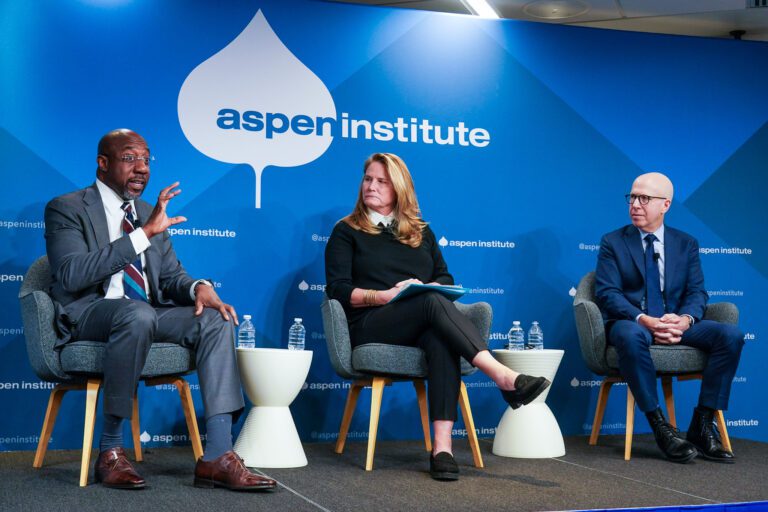Reducing the Cliff Effect to Support Working Families
Across the country, families of all financial backgrounds struggle to pay for child care given it is one of the largest items in the household budget. For low-income working families, the cost can be unaffordable without financial assistance through a child care tuition subsidy. Current eligibility policies can provide hardship for families striving to increase earnings through what is known as the cliff effect–when a minor increase in income can cause a swift and total loss of child care tuition subsidy that makes child care affordable. The cliff, sometimes called the “benefits effect,” occurs when a family’s income increases above the income eligibility for financial supports. Income requirements force parents to choose between the needs of their child(ren) and income increases, leading to the potential loss of critical supports including Supplemental Nutrition Assistance Program (SNAP), Temporary Assistance for Needy Families (TANF), child care assistance, health care coverage, subsidized housing, and the Earned Income Tax Credit (EITC). This is a significant issue for low-income families given that typically an increase in hourly wages is less than the amount the family loses in benefits.
Family stability and self-sufficiency are inextricably linked to the development of children, including their brain development, school success, and health. For these reasons, there is increased focus on potential mechanisms for reducing the “cliff or benefits effect” to support stronger outcomes for children and families. A 2010 study by the Women’s Foundation of Colorado showed that 1 in 3 families did not accept income increases to remain eligible for child care tuition subsidy. Research in Colorado, Florida, and Maryland shows families must weigh pay increases and career mobility with basic services for their children. Each state is working to eliminate these disincentives to work and increase the wage earnings of parents.
In Colorado, legislation was passed specifically to pilot and then expand programs to reduce the cliff effect. The goal of the legislation was to create more of a “slope” rather than a sudden drop off. The Child Care Assistance Cliff Effect Pilot Program has gone through several revisions, one in 2012 and most recently in 2016. The pilot program operates in 15 of the 64 county-administered departments of human services, working to mitigate the cliff effect for low-income families. Counties are encouraged to collaborate with community partners, early childhood education experts, and families to develop a revenue neutral approach for each family as income rises. Evaluation efforts have sought to determine if the parents in the pilot program changed their behaviors to be more likely to accept promotions, work additional hours, and take higher paying jobs, all of which would result in increased income.
The Bell Policy Center conducted a qualitative review to assess the Colorado Cliff Effect Pilot Program. It found families and county administrators were positive about the program and its potential for improved family outcomes. Survey and anecdotal evidence from families and county officials demonstrated the program enabled some people to achieve greater economic mobility. Most families and county administrators praised the program, however, families also said they worried about losing child care benefits due to slight changes in income. Data analysis showed reducing worry about the cliff effect could spur positive action toward increasing income by working more hours, taking a new job, or accepting a promotion. Still, the Bell found the Cliff Effect Pilot Program was not well understood, contributing to implementation challenges. In addition to communication, the differing implementation approaches between counties and the implementation timeline, requiring copays to increase during a two-year period regardless of family income increases, offer opportunity for refinement and improvement. Having learned from the pilot, the Colorado legislature and Department of Human Services are working on the next innovations to support families to increase their wages.
Maryland recognized a family’s economic success may be limited if their income comes from an inflexible job lacking wage progression. As a response, in 2017, the governor created the Two-Generation Family Economic Security Commission and Pilot Program plan of action in 2017 through an executive order. The benefits cliff was one of the identified barriers to family self-sufficiency. The commission recommended the alignment of community supports to create a network of transitional services and is currently working on next steps.
In Florida, there was growing recognition that systemic approaches were needed to simultaneously address the needs of both families and children in poverty. The Florida Children’s Council became the convening body for this change, working with strategic leadership and partners to identify more effective policies to improve economic stability and strengthen outcomes for children and families in poverty. A partnership with the Florida Chamber of Commerce has been instrumental in educating business leaders and policymakers about the complex issues of poverty. In 2017, the Florida Chamber Foundation published a report Less Poverty, More Prosperity: The Florida Fiscal Cliffs Report. This report outlines the impact of the “fiscal cliffs” that occur when a marginal increase in income results in a loss in public benefits, often leaving families with fewer resources. Prosperity is a core value of the business community, and poverty impacts businesses and families alike; therefore, the business community is invested in decreasing the cliff effect.
The Florida Children’s Council recently published the results of social service analysis and aligned policy solutions in Two Generational Approach: Focused Policies for Improved Outcomes. Building on this report along with the fiscal cliff publication, the Florida Chamber Foundation has launched an initiative to engage leaders in developing system and policy improvements for children and families in poverty. This initiative includes a core advisory body of subject-matter experts, a series of state-level Prosperity Summits, a data portal to analyze root causes and system links between various co-occurring elements of poverty, targeted reports, and scorecards to assist leaders in designing more comprehensive policies that reflect the unique needs of families with young children in poverty. At the heart of the recommendations is how to provide families with a graduated phase out of supports and incorporate workforce services to improve financial outcomes. The goal is to reduce the need for public supports while improving outcomes for the entire family.
With leadership from Florida Children’s Services Councils, CareerSource Florida, and Early Learning Coalitions in four counties, as well as philanthropic organizations, Florida is now implementing a demonstration project to better integrate child care and workforce services. The goals are to reduce the number of changes in quality child care, mitigate the cliff effect, and reduce toxic stress by positively impacting parents’ motivation and capacity to improve their economic position and parenting skills. Families eligible for child care assistance will participate in individual workforce plans that will include child care needs. Like Colorado, Florida established a decelerated payment plan for the phase out of child care payments as family income increases.
The rationale for reducing the cliff effect is simple: It helps families become more economically self-sufficient. Employees who are able to experience economic security for their children when accepting raises, working additional hours or advancing in their careers have a greater likelihood of work retention. Particularly, in times of low unemployment, there is an added benefit to employers who are better able to retain and promote talent. By working together, businesses and government can create work-based pathways for economic stability, reduce government dependency, improve child and family outcomes, and support economic development.
By:
Brittany Birken, Ph.D., Chief Executive Officer, Florida Children’s Council
Erin Moriarty-Siler, Director of Communications, the Bell Policy Center
Roxane White, Morgridge Family Foundation Innovator in Residence, Ascend at the Aspen Institute
Related Posts



